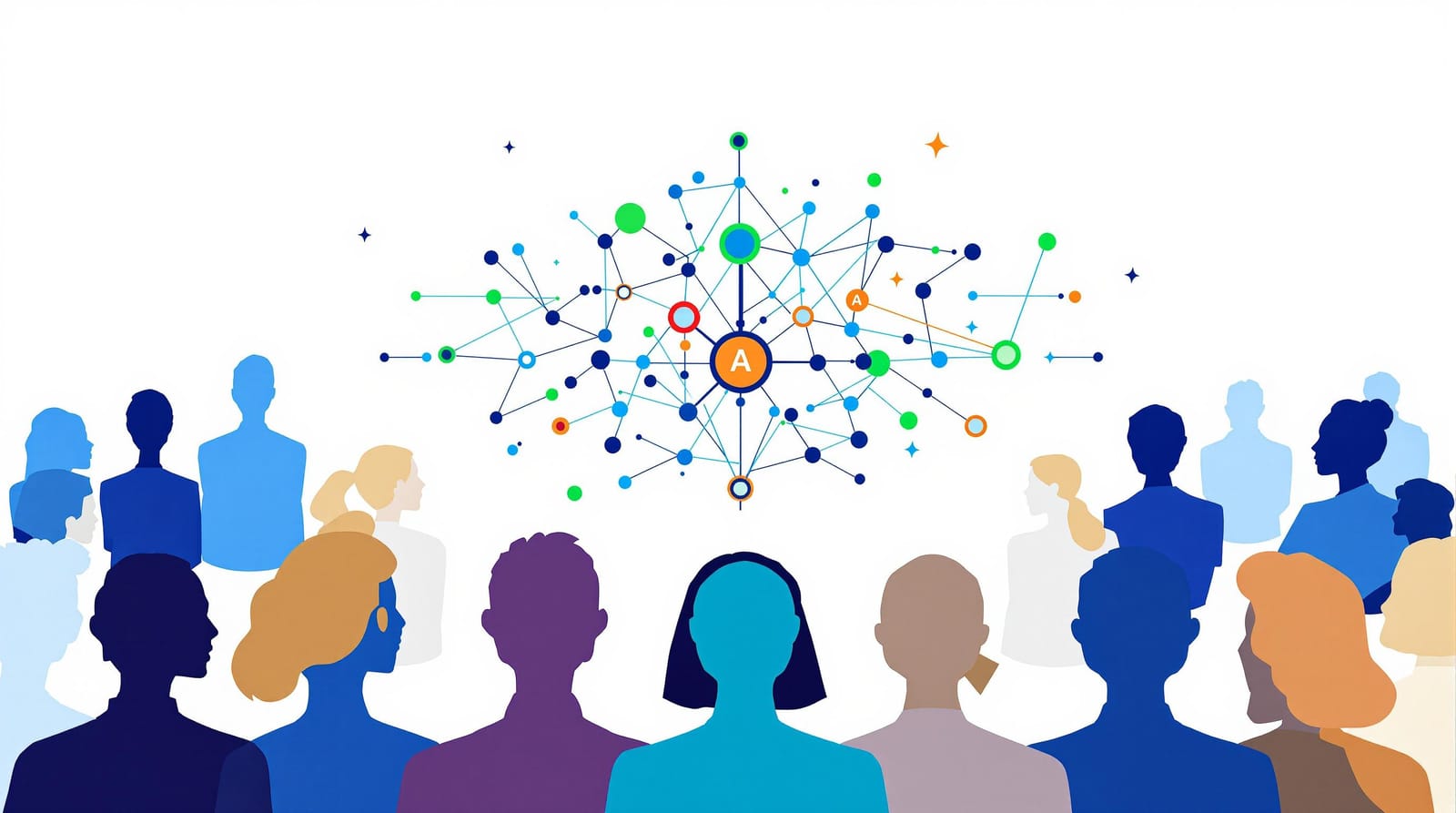Building datasets that respect cultural differences is essential for ethical and effective AI systems. Here's what matters most:
-
Key Focus Areas:
- Clear Documentation: Outline methods, biases, and ethical safeguards.
- Meaningful Inclusion: Actively involve diverse cultural groups during data collection.
- Regular Updates: Continuously review datasets to address new biases and cultural changes.
-
Challenges:
- Ensuring representation while managing resource demands.
- Balancing detailed responses with ease of analysis.
-
Effective Strategies:
- Use multi-select options and open-ended responses to capture nuanced cultural data.
- Engage experts and communities to validate datasets.
- Conduct cross-cultural testing to uncover hidden biases.
Cultural Bias in AI Systems: Ethics & Diversity
1. AI Informer Hub

AI Informer Hub goes beyond sharing AI news and tutorials by offering practical advice for creating datasets that respect cultural diversity. The platform combines educational content with actionable strategies to help developers build datasets that acknowledge and represent complex cultural identities.
A key focus of the Hub is on flexible data collection methods, such as multi-select options and open-ended responses. These tools allow participants to describe their cultural identities in nuanced ways, avoiding restrictive categories [2].
AI Informer Hub emphasizes three main principles:
- Data quality: Ensured through validation checks and thorough documentation.
- Ethical practices: Implemented via consent protocols and privacy safeguards.
- Cultural representation: Achieved through diverse and inclusive sampling.
These strategies align with CALI’s approach to preserving cultural diversity [3], steering clear of the mistake of treating cultural groups as uniform. Techniques like randomizing response choices or using alphabetical ordering work to reduce bias and improve representation [2].
The Hub also prioritizes detailed documentation, covering methodologies, cultural considerations, biases, and intended uses. This transparency ensures datasets are applied ethically and remain relevant across various cultural settings while clearly outlining their limitations [1].
Though AI Informer Hub provides a strong starting point for creating culturally aware datasets, exploring other frameworks can offer additional insights into how these principles can be applied effectively.
2. Other Frameworks for Culturally Sensitive Datasets
Several established frameworks complement AI Informer Hub's focus on data quality, ethics, and cultural representation. One example is the CALI (Culturally Aware Language Intelligence) framework, which highlights the role of cultural diversity in annotation. It processes 2.7K premise-hypothesis pairs while reflecting a wide range of cultural variations [3].
The Schusterman Family Philanthropies framework takes a different approach, using tools like multi-select options, open-ended responses, and randomized choices. These techniques are designed to capture complex cultural nuances and reduce bias. This aligns with AI Informer Hub's emphasis on flexible data collection methods that allow for diverse cultural expression while ensuring data accuracy [2].
Key elements for successfully applying these frameworks include:
- Engaging experts and communities to identify cultural gaps and address them effectively.
- Conducting cross-cultural testing with iterative adjustments to validate the dataset.
- Documenting methodologies thoroughly, including ethical considerations and potential biases [1].
Like AI Informer Hub, these frameworks stress the importance of clear, transparent documentation. By detailing methods, biases, and ethical safeguards, they ensure datasets are both useful and respectful of cultural diversity [1]. This thoughtful balance of technical precision and cultural awareness helps maintain ethical standards across different cultural settings.
Advantages and Disadvantages
Creating datasets with cultural awareness comes with both benefits and challenges, as summarized below:
| Approach | Benefits | Challenges |
|---|---|---|
| CALI Framework | • Provides a structured way to detect cultural nuances | • Requires significant resources for annotation • Needs input from multiple cultural groups for validation • Limited to specific languages |
| Multi-Select Methods | • Reflects cultural complexity • Reduces bias from forced-choice options [2] • Allows for more detailed responses |
• Data analysis becomes more complicated • Demands higher computational power and resources • May lead to inconsistent responses |
| Expert-Community Engagement | • Incorporates insights directly from cultural experts • Minimizes risks of misinterpretation • Improves dataset accuracy |
• Requires time-intensive coordination • Involves higher costs for implementation • Can be challenging to organize expert collaboration |
| Cross-Cultural Testing | • Ensures cultural representation is accurate • Helps uncover hidden biases • Enhances dataset reliability |
• Extends development timelines • Involves a complex process of iteration • Needs access to diverse testing groups |
These methods emphasize the need to include cultural awareness throughout dataset development. The right approach depends on the specific context. For example, while multi-select methods capture cultural subtleties, they also introduce added complexity to data analysis.
Research highlights that culturally aware datasets improve AI performance in diverse cultural settings. By representing a range of perspectives, these datasets help make AI more reliable and accurate [1].
"Ethical considerations like privacy, consent, and harm mitigation set culturally aware datasets apart" [1].
Balancing these approaches thoughtfully ensures datasets align with ethical and cultural standards while remaining practical to implement.
Conclusion
Creating datasets that respect cultural nuances demands a thoughtful approach, blending technical accuracy with cultural awareness.
Here are three key areas to focus on:
- Clear Documentation: Providing detailed and transparent documentation helps minimize misuse and promotes ethical application of datasets [1].
- Meaningful Cultural Inclusion: Simply adding diverse perspectives isn’t enough. Genuine representation, like the approach outlined in the CALI framework, enhances dataset quality by involving active input from various cultural groups [3].
- Ongoing Review: Regularly assessing datasets ensures they stay relevant and culturally sensitive. This means identifying new biases and updating content to mirror shifts in cultural understanding [1].




